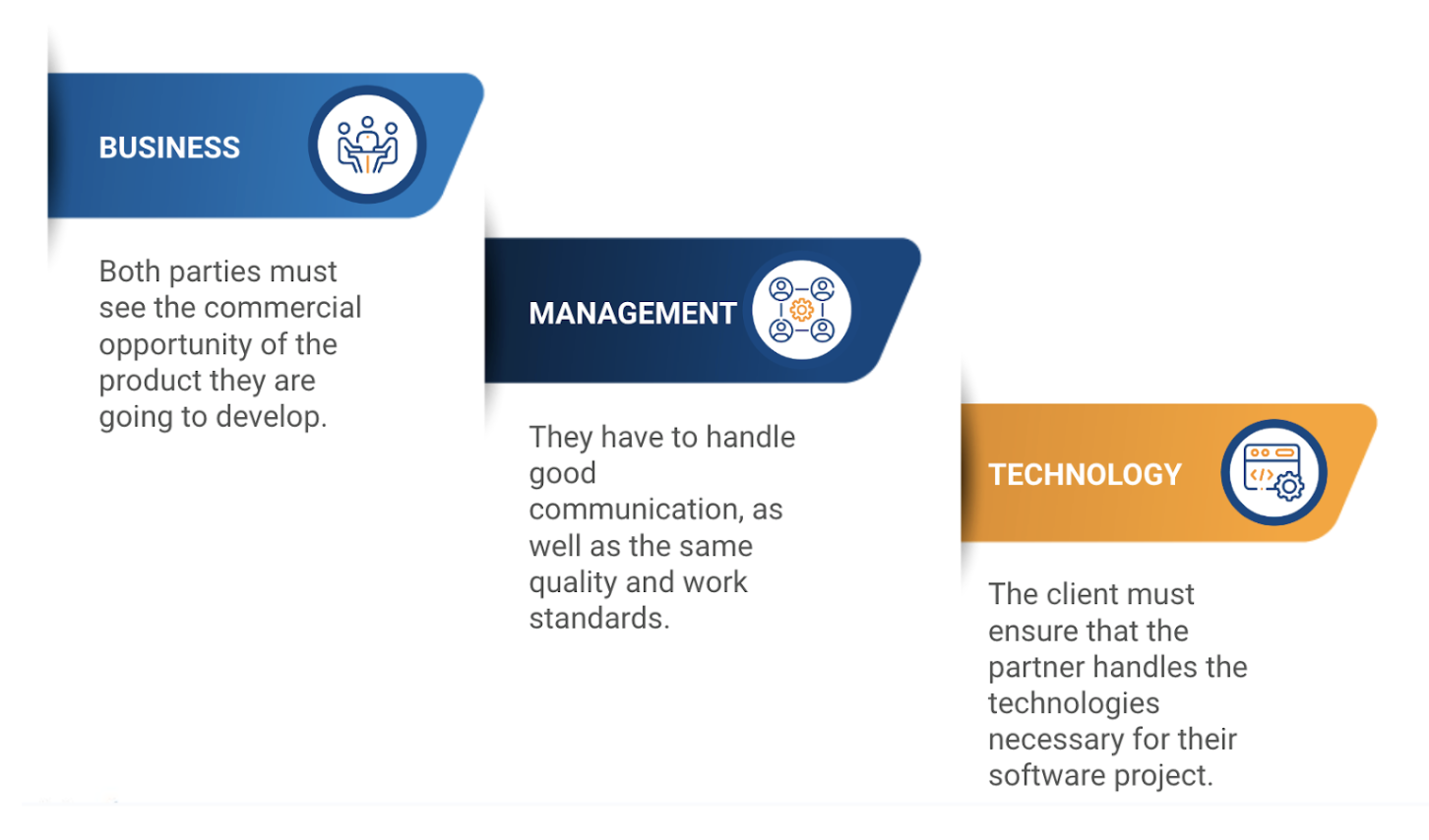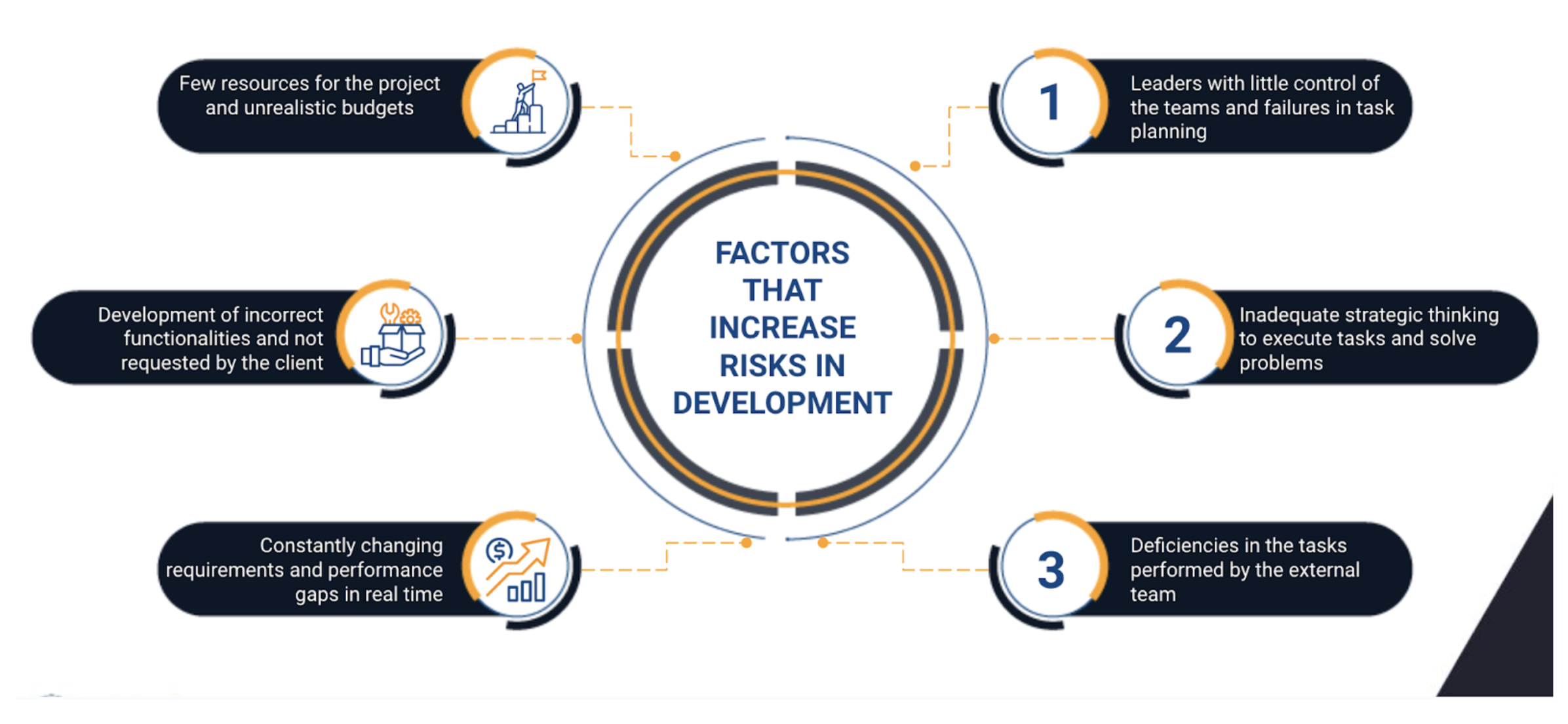
Collaborating with a software provider can bring immense benefits to a company, as it allows them to capitalize on the specialized skills and knowledge of another organization to achieve shared goals. No matter what kind of project your company needs to undertake, there will always be a competent software service provider to fulfill your product requirements.
For instance, a company may possess strong product development abilities but may lack proficiency in implementing cloud solutions. In such a case, a technology partner with experience in cloud computing can assist the company in effectively implementing cloud solutions.
In addition, the financial advantages of collaborating with a technology partner are quite clear: Over the medium and long term, this approach can prove to be significantly more cost-effective than direct recruitment, as the technology provider can supply all the necessary profiles for your project without any expenditure on recruitment or training. Essentially, you only pay for the amount of time the resources are utilized.

The innovation and new perspectives that a technology partner brings to business software development
Working with a technology partner can help an organization to stay current and adopt innovative solutions to stay competitive, since they are often exposed to many industries, different types of developments by the different clients they handle. You are forced to be constantly evolving by market demand, which is an advantage in bringing in outside ideas and perspectives.
- Software providers are capable of delivering sophisticated technological solutions for specific business challenges. For example, a partner well-versed in artificial intelligence can aid the company in implementing machine learning systems, which can enhance decision-making processes.
- They can assist companies in streamlining their operational workflows by automating repetitive tasks and optimizing efficiency overall. This, in turn, can bolster productivity and reduce expenses.
- A software company provide assistance in integrating disparate systems and ensuring that data transfers smoothly between them. This can boost the efficiency and effectiveness of the company.
- Partners can also be invaluable in collaborative research and development endeavors, which can result in the creation of innovative solutions that neither of the companies could have created independently.

Risks when working with a technology partner in software development
When starting any kind of work or project with a software provider, several aspects must be evaluated to ensure that the flow is positive and beneficial for both parties. These aspects can be divided into the following three dimensions:
Business risks
"Not all risks of a software development project are within the domain of the IT department. Rather, they lie within those areas of the company where business stakeholders reside. These stakeholders see the business opportunity that can be achieved through software solutions", explained an article in CIO magazine.
Management risks
These management risks may arise when communication between the partner and the company is insufficient and there is no full understanding of the project goals and tasks. Additionally, it is important to ensure that the partner's objectives and the company's objectives are aligned, so that the workflow is clear and consistent with the project.

If the partner does not have the same quality standards as the company, there may be issues regarding the quality of the software delivered. This can have a negative impact on the company's reputation and customer satisfaction.
Technology risks
Working with a partner in software development can also present certain technology risks. For example, if the partner uses technologies different from those the company uses or plans to use, there may be compatibility issues that make it difficult to integrate the software with other existing systems.
It may also happen that in the midst of software development, the company detects that the partner does not have the necessary skills for the project.

"It's surprising how often we find that a subcontracting partner hasn't been adequately vetted: confirming that the project team has the skills and experience needed to succeed. Certifications, ongoing training, industry, and functional experience are all dimensions that should be part of your company's due diligence before hiring", they noted in the same CIO article.
Look at the digital solutions we can create for your business
Factors that increase risks in software development

Signs that there is a conflict in software development management
Leaders should not fear conflicts in software development; what they should do is learn to detect problems in time to resolve them early and prevent future inconveniences.
In a report by Deloitte, they discuss the signs that indicate that the partner and the company are working misaligned:
- When development teams feel there is no clear guidance on project risks.
- When partners do not evaluate the project scope or changes throughout the development cycle.
- When there is no updated and clear information about project progress.
"The goal is to better integrate risk management into project planning and development so that projects can be delivered quickly, but with the appropriate attention to risk assessment and mitigation", they noted.
Differences in vision and objectives between the company and the technology partner can also cause conflicts in software development, as well as lack of communication and disagreements in planning: all of which can lead to resource allocation failures and delays in delivering results.
If the company and the technology partner use different work methodologies, this can create problems in project coordination and execution. Similarly, if the technology partner does not meet the quality standards established by the company, this can generate conflicts in the relationship between them.
It is important for the company and the technology partner to work together to identify and resolve any conflicts that arise during software development, in order to ensure the success of the project and the satisfaction of both parties.
Benefits of good risk management
In many cases, business leaders do not give much importance to risk management because they believe it will take away their autonomy in managing their projects, as indicated in a study conducted by the Polytechnic Institute of Braganca in Portugal, in conjunction with the University of Minho.

Therefore, in this research, they emphasized the benefits of good risk management in software development:
- A good risk management provides information to leaders for better decision-making regarding the project.
- Timely communication of risks improves the ability to take action to address future situations.
- It helps in setting priorities.
- It contributes to the prevention of incidents based on post-incident investigation.
- It helps to comply with project requirements.
- It allows understanding the risk and its potential impact on project objectives.
Most common risks in software development with a partner
The researchers also shared a list of the most frequent risks that companies face when developing a software product:
- Delay or failure to meet dates in the delivery of advances.
- Lack of effort and commitment of team members to the project.
- Quality of project documentation and reports.
- Workload/overtime for some team members.
- Difficulty in communication between team members.
- Loss of team members.
- Shortage of time and resources.
- Lack of knowledge of the tools that are used.
- Inexperience of team members.
- Changes in customer requirements.
- Complexity of the system functionalities used in the project
- Difficulty in communicating and collecting customer requirements.
- Difficulty in subcontracting management.
- Problems with software production.
- Little knowledge of the business area.
- Poor quality of system architecture.
- Planning failure.
- Failure in the modeling of the requested requirements.
- Lack of adequate space for work and meetings.
Strategies to manage risks in software development with a technology partner
Managing risk and conflict in software development with a technology partner can be challenging, but there are several strategies that can help you manage these situations effectively.

Some of them are:
Establish clear communication
Open and clear communication between the company and the technology partner is key to identifying and addressing risks and conflicts. A regular and open line of communication should be established to discuss any issues that arise on the project.
Set clear expectations
Clear expectations should be established from the beginning of the project, to avoid misunderstandings and conflicts in the future. The goals and objectives of the project must be clearly defined, as well as the roles and responsibilities of each party involved.
Conduct a risk assessment
It is important that a risk assessment is conducted at the beginning of the project to identify and prioritize potential risks that may arise. This will allow the company and the technology partner to better prepare and plan how to handle them.
Establish a contingency plan
Developing a contingency plan for each identified risk is essential to minimize its impact. A set of actions must be established that can be implemented quickly if a risk materializes.
Use project management tools
Project management tools can help monitor project progress and spot any risks or issues before they escalate into a conflict. It is important that the company and the technology partner use the same tools to ensure effective collaboration.
Establish a conflict resolution approach
There is always the possibility of conflicts arising during the development of the project. It is important to establish a conflict resolution approach early on so that you can address them quickly. This may include the appointment of a neutral mediator or the creation of a committee to address the issues.
Conclusion
Effective risk and conflict management in software development with a technology partner requires clear communication, established expectations, risk assessment, contingency planning, project management tools, and a conflict resolution approach. By working together on these aspects, the company and the technology partner can minimize risks and conflicts and achieve project success.
We recommend you this video

